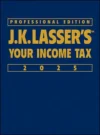Deadline Approaching for Filing for Certain Refunds
April 15, 2010, is not only the filing deadline for 2009 income tax returns. It’s also the last day that taxpayers who are owed refunds on their 2006 return can file for them. And it’s the deadline for requesting a refund arising from a bad debt or worthless security that occurred in 2002.
Refunds of 2006 Taxes
The IRS is waiting for 1.4 million people who didn’t file 2006 returns to do so by April 15, 2010, in order to claim $1.3 billion in refunds. Who falls into this category of people? Taxpayers whose income was below the filing threshold and who:
- Had income taxes withheld (typically from wages). The only way to receive a refund of those taxes is to file a tax return.
- Qualify for the earned income credit. The credit can exceed the amount of tax owed to generate a refund. The credit applies with respect to income below $38,348 for those with two or more children, $34,001 for people with one child, and $14,120 for those with no children.
Other taxpayers may also want to file an amended return if they discover they failed to claim a deduction or credit that could have lowered their tax bill.
Note: When filing a return for 2006, be sure to claim the one-time telephone excise tax refund. The refund is a standard refund amount of $30 to $60, or the actual amount of tax paid on phone service billed from March 2003 through July 2006.
Refunds of 2007 or 2008 taxes. As you prepare your 2009 return, again, you may discover errors or omissions on 2007 or 2008 returns that could give you a tax refund. While there is still time to file for a refund of 2007 and 2008 taxes, the sooner you do so, the sooner you get back your tax dollars.
Bad Debts or Worthless Securities in 2002
If you now discover you had a bad debt that became worthless in 2002 or you had securities that became worthless in 2002, the tax law gives you an extended period in which to file for a refund on taxes that results from claiming the bad debt or worthless security on the old return. You have 7 years from the due date of the return in which the event occurred giving rise to the write-off.
Bad debt. You can deduct nonbusiness as a short-term capital loss. To claim this write-off for a bad debt in 2002, you must show four things:
- You had a valid debt (it was not a gift).
- There was a debtor-creditor relationship. You expected to be repaid.
- The funds providing the loan or credit were previously reported as income or part of your capital. Thus, if you are on the cash basis, you claim a bad debt loss for unpaid salary or rent owed to you.
- The debt became worthless during 2002. This means that there was an identifiable event, such as the debtor’s bankruptcy, that occurred in 2002 to fix the fact that the debt could never be collected.
Worthless security. To claim a write-off for a worthless security, you must show that there was some value in 2001 and that complete worthlessness occurred in 2002. The loss is treated as a capital loss. It can offset capital gains for that year, and up to $3,000 of ordinary income. Unused capital losses can be carried forward and used in future years. Thus, if you can’t utilize the capital loss on a 2002 return, you’ll also have to file an amended return for 2003 and any other years in which the capital loss is used.
How to File for a Refund
If no return has been filed for the year to which the refund relates, file Form 1040 for that year (e.g., if you did not file a return for 2006, file a 2006 Form 1040).
If you filed a return for the year but did not include a deduction or credit that gives rise to a refund, file an amended return, Form 1040X (e.g., you filed a 2002 return but now want to amend it to claim a worthless security).
You can download a return or amended return for a prior year from www.irs.gov (in the search box, put the year of the return and the return name, such as 2002 Form 1040X).
Amended return
On Form 1040X, you may file an amended return within a three-year period to claim a refund or correct a mistake made on an original or previously amended return.



